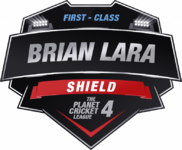I disagree. I think the current system works pretty okay.
Look at the use of DRS since its inception. Technically, a fielding captain can ask for DRS upon any query of dismissal. Now, we can exclude bowled, because that's rather blatant. Stumped and run out are umpires' reviews. So is obstruction. Timed out is a matter of the clock. Hit wicket is obvious, as is retired out. That's 7 of the current 9 ways to be out in cricket.
That leaves us with two dismissal types. LBW and caught. Now, caught is usually pretty easy. Ball hits bat, ball goes to a fielder, howzat, out. An extremely high percentage of DRS reviews for caught are for caught by the keeper or first slip. Occasionally you get a leg slip or short leg into the scenario. But by and large, it's the keeper or first slip. I don't think much people will disagree with that. A ball doesn't just go on its own to gully off of a good line and length without bat being involved. Maybe forearm, okay, but that's also rare. LBW, on the other hand, that's a different thing. You're appealing and relying on several scenarios. The umpire's assessment of the pitch, the way that pitch has been playing, your own ball trajectory, the pitch point, the line, the impact point, and so on and soforth.
So clearly there is a reason why most DRS reviews have been for LBW. And that takes into account that practically everyone has accepted HawkEye predictions as reliable. Which it is, I think I made a post here over 10 years ago when people were doubting its accuracy. I believe most cricket boards have also had UltraEdge integrated. That's therefore accepted as reliable. HotSpot is not common due to the financial issues, but it helps. I haven't heard or read of any cricket board not accepting HotSpot technology in reviews if it's available. So we have to agree that it's also accepted when it's available.
All I'm doing so far is making logical assumptions, but I don't think anyone will disagree that these assumptions are wrong. Feel free to discuss.
Now, the topic at hand. The use of the DRS system and howlers.
If we (logically) agree that it's mostly for LBW's, and to a slightly lesser extent for catches, then you have to also (logically) agree that you should only review when you're sure. This breaks it down into several scenarios, which I will outline below.
1. Batsman hit on pads, fielding team appeals, standing umpire gives not out. Fielding captain reviews.
Well that's clear enough. The fielding captain should consult with his wicketkeeper, he's the one who would really be in the best line to see the trajectory of the ball. Fielders in the slips will incur parallax error and no matter what they say, they really should not be involved in the decision to review. Mid off/mid on, provided they are not too wide, will also be subject to parallax error, but because they have the advantage of a front on sight (as they call it on TV now "front on spin view"), they are more likely to see potential edges and trajectories that the slips cannot. The bowler should be the next person consulted. He will be the best one to state where the ball pitched, where the batsman was hit, and which way the ball was going. A leg spinner who hits a right handed batsman right in front of the off stump but said he gave the ball a good rip is unlikely to see three reds, no matter what everyone else says. And this part is perhaps the biggest failure of captains in the DRS era. They do not ask the bowler what ball he delivered. Bowlers, to their credit, just want wickets, so they will agree with their captains, but you've just lost a review because you bowled an almighty spinning delivery and conveniently forgot to tell the captain in your excitement. There's a reason for a slightly bigger proportion of LBW DRS reviews asked for spin bowlers rather than seam bowlers.
2. Batsman hit on pads, fielding team appeals, standing umpire gives out. Batsman reviews.
There is no reason for a batsman to review an LBW decision by an umpire unless he is sure that he either hit the ball or he has taken such a huge stride that HawkEye gets screwed with the prediction. If you look back at the percentage of batsman LBW DRS reviews, it's going to come back mostly as "Umpire's call". Statistically speaking, you really should not review an LBW call. Yes, there are howlers. Those are the ones you review. Asking the non-striker is an asset, but is not without its own limitations. In limited overs matches, most non-strikers watch the bowler's run up and delivery stride. They are halfway down the pitch by the time the ball is delivered. They cannot tell you whether the ball was delivered wide of the crease, narrow, behind, in front, sideways, up, down, swinging in, out, diagonally, pitched to hit the third man halfway to the boundary, nothing. You're better off accepting the umpire's call.
3. Batsman plays a shot, catch is claimed, standing umpire gives not out. Fielding captain reviews.
This actually has one of the highest percentages of reversed decisions. Weird, because I thought cricket was a gentleman's game and batsmen walked. But in the teens and now the twenties, I guess batsmen have been trained differently. With the amount of padding in gloves these days, I do suppose that occasionally you really can't tell if you got a feather onto the ball, but really...batsmen should walk and the fielding side should not have to review. Fielding captains should ask for the review if they are sure, because more often than not, it's out.
4. Batsman plays a shot, catch is claimed, standing umpire gives out. Batsman reviews.
Again, a batsman usually knows if he had hit the ball or not. He should review this if he's sure. He's usually correct most times.
Captains need to use their reviews properly, and not just use it stupidly. I hate to see the last established batsman using a review just in the hope that he might be in and not out, only to see a good lower order batsman get out to a howler and cannot review it.
I will say that since DRS, the standard of umpiring has improved. We see much less howlers, but they do happen. I see no need to change the current system. I see a need for teams to use that system properly.
Just note that for an umpire to give a batsman out someone must appeal, and an appeal is valid at ANY point in time before the next ball is bowled, replays or not. It's in the Laws. Technically nobody can appeal, watch the replays on the big screen, and then appeal, and the umpire has to give it out if it is. Just saying.








